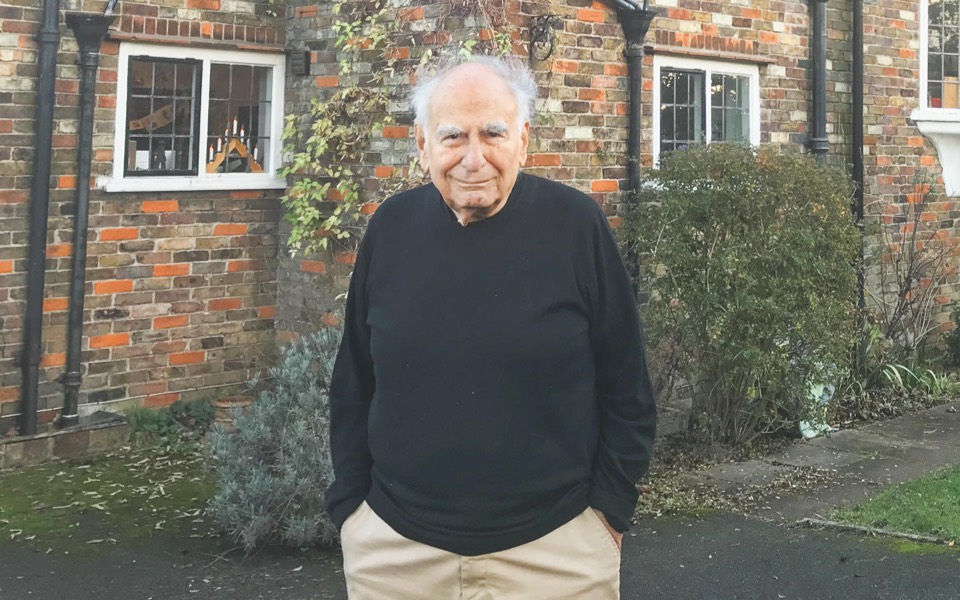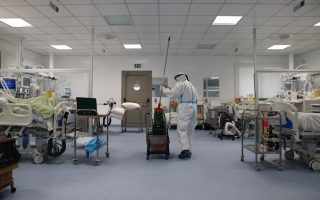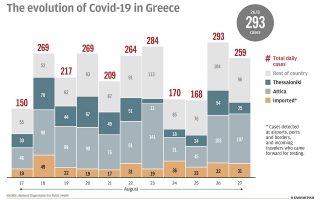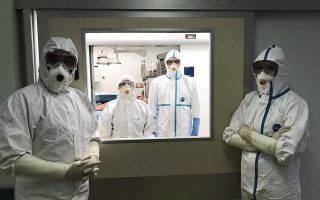Greek behind early vaccine technology ‘happy’ his work is ‘helping humanity,’ he tells Kathimerini

Gregory Gregoriadis, an 86-year-old Greek scientist, was vaccinated against the novel coronavirus with the Pfizer/BioNTech jab at a UK medical center in Northwood, Middlesex just a few days ago. Fifty years earlier, in a London laboratory, Gregoriadis and an English colleague discovered one of the methods that contributed to the evolution of the technology used to make this particular vaccine.
“I am so happy,” Gregoriadis, professor emeritus of the School of Pharmacy at University College London and founder of Xenetic Biosciences, tells Kathimerini.
Even though the patent of his discovery has expired and cannot bring him any monetary rewards, the expert in drug delivery says he felt absolutely euphoric when he got the jab. He was happy, he said, because his work is “helping humanity.”
“Scientific results and success are more important than anything else to me,” he adds.
Gregoriadis was born in Athens in 1934. He studied chemistry at the University of Athens, did his military service in the air force and then went abroad as he could not find work in Greece. “I decided to leave because I had no future; you could not prosper in Greece at the time without knowing people who could help you,” he admits.
He went to Hamburg in Germany first and remembers arriving in Canada on November 22, 1963, the day John F. Kennedy was assassinated. His next steps took him to New York and then on to London, where, working at a laboratory in the Royal Free Hospital School of Medicine in 1971, he and Brenda Ryman discovered that liposomes could be used to effectively deliver drugs into the human body. In 1974, Gregoriadis and South African scientist Anthony Allison published a paper in Nature describing the benefits of liposomes for delivering antigens in vaccination.
The Pfizer/BioNTech and Moderna vaccines use messenger RNA (mRNA) that “instructs” the cells to produce the spike protein found on the surface of the SARS-CoV-2 virus. Once that protein is produced, triggering an immune response, the cell breaks down the instructions and gets rid of them. In both vaccines, lipid nanoparticles are used as the vehicle to deliver the mRNA into the body, while also protecting it. This is the technology that evolved from the pioneering research carried out by Professor Gregoriadis and his colleagues, which was also used in the 1990s in the development of vaccinations against the flu and hepatitis A.
“I am really excited that this work has led to this amazing thing, where millions of people are being vaccinated and lives are being saved,” he tells Kathimerini.
“I didn’t have much hope that it would ever become this important until the pandemic broke out,” he adds.
When he showed up at the Northwood clinic last Sunday to get his vaccination, he asked whether he would be getting the one by Pfizer/BioNTech.
“I wanted to have this memento,” he tells Kathimerini. “It is a vaccine that is based, with some alterations, on our work, and that is a very, very big deal for me.”





